Related Research Articles

SubSpace is a 2D space shooter video game created in 1995 and released in 1997 by Virgin Interactive which was a finalist for the Academy of Interactive Arts & Sciences Online Game of the Year Award in 1998. SubSpace incorporates quasi-realistic zero-friction physics into a massively multiplayer online game.
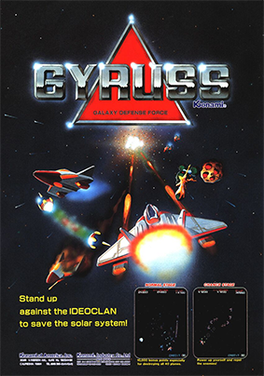
Gyruss is shoot 'em up arcade video game designed by Yoshiki Okamoto and released by Konami in 1983. Gyruss was initially licensed to Centuri in the United States for dedicated machines, before Konami released their own self-distributed conversion kits for the game. Parker Brothers released contemporary ports for home systems. An enhanced version for the Family Computer Disk System was released in 1988, which was released to the North American Nintendo Entertainment System in early 1989.

Stargate is a horizontally scrolling shooter released as an arcade video game in 1981 by Williams Electronics. Created by Eugene Jarvis and Larry DeMar, it is a sequel to Defender which was released earlier in the year. It was the first of only three productions from Vid Kidz, an independent development house formed by Jarvis and DeMar. Some home ports of Stargate were renamed to Defender II for legal reasons.

Star Trek is a text-based strategy video game based on the Star Trek television series (1966–69) and originally released in 1971. In the game, the player commands the USS Enterprise on a mission to hunt down and destroy an invading fleet of Klingon warships. The player travels through the 64 quadrants of the galaxy to attack enemy ships with phasers and photon torpedoes in turn-based battles and refuel at starbases. The goal is to eliminate all enemies within a random time limit.
In spaceflight, an orbital maneuver is the use of propulsion systems to change the orbit of a spacecraft. For spacecraft far from Earth an orbital maneuver is called a deep-space maneuver (DSM).

Raptor: Call of the Shadows is a vertically scrolling shooter developed by Cygnus Studios and published by Apogee Software. Its working title was "Mercenary 2029". It was released on April 1, 1994 for MS-DOS compatible systems. The first episode of the game, "Bravo Sector", was distributed as shareware. The other two episodes were sold commercially.
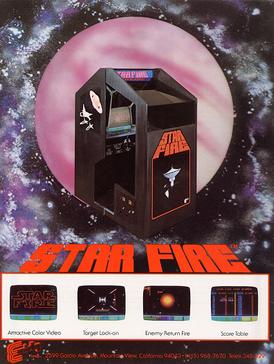
Star Fire is a first-person arcade coin-operated space combat video game created by Technical Magic for Midway-Bally and licensed for manufacture to Exidy in December 1978. It was distributed in Japan by Taito and Esco Trading in 1979. Designed by Caltech engineers Ted Michon, and David Rolfe and inspired by the movie Star Wars, the game is not based on a licensed property.

Blasteroids is the third official sequel to the 1979 multidirectional shooter video game, Asteroids. It was developed by Atari Games and released in arcades in 1987. Unlike the previous games, Blasteroids uses raster graphics instead of vector graphics, and has power-ups and a boss.

OutNumbered! is an educational video game published by The Learning Company in 1990 for both Windows and Macintosh PCs. It is aimed at children ages seven to fourteen and is designed to teach children mathematical computation and problem solving skills.
Ozma Wars is a fixed shooter arcade video game developed by Shin Nihon Kikaku (SNK) and released in 1979. The moving starfield background gives the impression of vertical scrolling, but the player ship's movement is restricted to the bottom of the screen.

Anteater is an arcade video game designed by Chris Oberth and released in 1982 by Tago Electronics. The player steers the tongue of the eponymous creature through a maze, retracting it when dangers approach. Though the arcade game was not a hit, it spawned a number of direct clones for home computers; Sierra's Oils Well became better known than the original. Oberth wrote an Apple II version of his own game for Datamost using a different title.

Major Stryker is a 2D vertically scrolling shooter video game written for DOS by Apogee Software. Its working title was "Strike Force" and was released in January 1993. It consists of three episodes, with the first episode distributed as shareware, and the rest available commercially. The three episodes are set on a Lava Planet, an Arctic Planet and a Desert Planet. The game was re-released as freeware on March 14, 2006, and on Steam with support for Microsoft Windows and macOS in 2014.
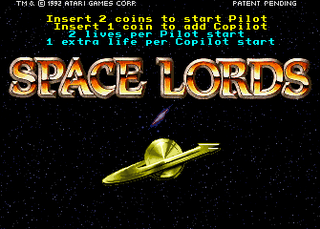
Space Lords is a video game released in arcades by Atari Games in 1992. It is a first-person perspective space combat video game.

Starfleet Orion is a 1978 science fiction strategy game written and published by Automated Simulations. It appears to be the first space-themed strategy game sold for microcomputer systems. The game was originally written in BASIC for the Commodore PET, but later ported to other early home computer platforms including the TRS-80 and Apple II. The game was something of a success, leading to a string of successes for the company, notably the major hit Temple of Apshai.
Lunar Rescue is an arcade game released by Taito in November 1979. The gameplay has some resemblance to both Taito's own 1978 hit Space Invaders and Atari, Inc.'s Lunar Lander.
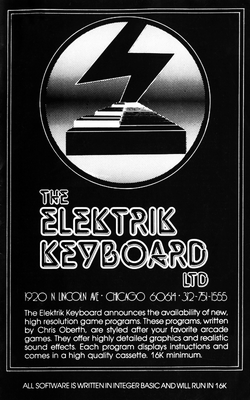
The Elektrik Keyboard was a computer and musical instrument store located on North Lincoln Avenue in Chicago, Illinois in the 1970s and 1980s. In the late '70s it added personal computers to its lineup, and began publishing Apple II computer software written by programmer Chris Oberth. The software, advertised in the company's catalog and sold on cassette, largely consisted of games including some that emulated popular arcade titles.
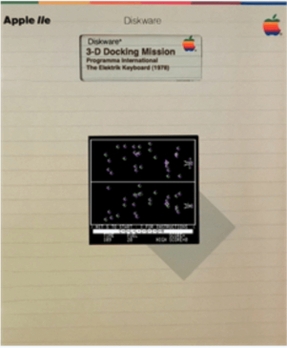
3-D Docking Mission is a simulation game for the Apple II written by Chris Oberth. The game was published by Programma International and The Elektrik Keyboard of Chicago, Illinois in 1978.

Depth Charge is an action video game for the Apple II programmed by Chris Oberth and published by The Elektrik Keyboard of Chicago, Illinois in 1978. A clone of the 1977 arcade video game Depthcharge, the player drops explosives from a moving ship attempting to eliminate submarines below it.
Christian H. "Chris" Oberth was a video game programmer who began writing games for the Apple II in the late 1970s. He also developed handheld electronic games for Milton Bradley, arcade video games for Stern Electronics and other companies, and ported games to home computers and consoles.

Space Zap is a space-themed fixed shooter arcade video game developed by Game-A-Tron and licensed to Midway Manufacturing in 1980. The player controls the defenses of an immobile base in the center of the screen which is attacked from the top, bottom, left, and right. Pressing one of four oversized buttons moves the gun in the corresponding direction. A fifth button fires. Space Zap shipped in three form factors: standard upright, cocktail, and Bally's Mini-Myte reduced size cabinet.